Published in the October 2021 issue of “Die Porsche Kassette”
Ⓒ2021 Technolab / PedrosGarage.com

For more information about track days and more, please visit my website:
www PedrosGarage.com.
Happy Porsche'ing,

If you’ve ever purchased a used Porsche or if you have perused the classifieds for a used Porsche, I’m sure you've seen how many of the sellers state, with pride, and generally in bold letters, that: “this Porsche has never been tracked!”
Every time I read that or hear it from a potential buyer of a car that I’ll be doing a Pre-Purchase Inspection (PPI) on that that’s what he’s looking for, it saddens me.
The way I see it, why buy a Porsche if you will never drive it the way the good Doctor Porsche intended it to be driven?
If you’re purchasing a very valuable and collectible example of the marque, as an investment, only to be admired and one day sold for multiple times of what you bought it for, I understand. But to buy it and be afraid to drive it hard is absurd!
Porsches are just one of a handful of cars that are meant for street and track use. I don’t mean that you have to be at every track day from every PCA Region and become a track junkie, but one of the greatest feelings in Porsche ownership is driving your car on the track and discovering its and your limits.
It’s also good for them! We’ve come to realize that Porsches that are driven hard (not abused) tend to work better and have less issues ‘down the road’.
Some people are concerned about getting a stone chip and cover the front end in blue tape, but it’s not that bad! The track is usually fairly clean. Many of the most used tracks around the country are well maintained and kept by a professional crew which does a great job. Furthermore, you can control who’s in front of you and how close. If you feel that you’re too close just let them get away and you’ll have plenty of clean, fresh air in front of you.
Driving on the track is also quite safe! PCA does everything in its power to make it so.
From the organization of the DE to the safety requirements which must be adhered to.
Within 30 days before you get to the track you need to take your Porsche to an authorized shop for a (complimentary) tech inspection to make sure that the tires, brakes, suspension and all safety equipment such as seat belts, windshield, etc. are in place and operational.

Racetracks are designed for cars to travel at high speed. The surface is generally better than most roads, cars run in the same direction (most of the time), and there are no speeding tickets issued.
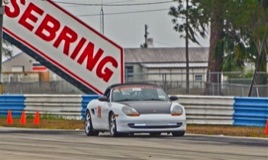
At all PCA DE events there are professional corner workers present to warn you of any potential dangers ahead through the use of colored flags. And if you want to feel better protected, you can also purchase track insurance for your track day.
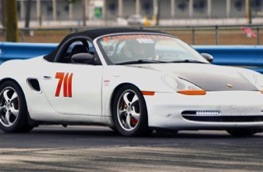
When you go to the track for the first time (and for a few more times after that) you are considered a novice driver and will have an assigned instructor riding in the car with you. The instructor is there to guide you by offering information and first-hand knowledge to make your track day safe and fun.

First you start at the classroom where the Chief Instructor will cover the bases and explain how the track day will go. After that, you go on-track!
By attending a few Driver Education (DE) events you eventually can advance to a stage where you no longer need an in-car instructor, although you still keep learning. If you want to pursue it, eventually, you can also become an instructor yourself!
I’ve been an HPDE instructor for many years and every time I do another track day I learn something new about me and/or my car.
If your Porsche has lived its life strictly on the roads, it really hasn’t lived at all.
So, what are you waiting for?
Contact your local PCA Region and sign up for the next DE event.
There’s nothing more enjoyable you can do with your Porsche.
Having said all that, I always recommend to anyone wanting to start doing track days, that they should first participate in several autocrosses (AX). They are also a lot of fun!
An AX is a timed event, in a closed-access track, usually on a large, not used parking lot, at an unused airport, or other tarmac where a short course is laid out using bright colored cones. One lap at the AX is generally around 60 seconds and it’s just one car at-a-time, on track.
The advantage of first running AX courses is that it helps you learn many of the basics that you will need at the track.
You will learn exactly where your tires are because you need to come very close to the cones without touching them. This will help you to perfectly make your apexes at the track.
The AX is generally run in second gear, so speed is manageable, but it tests the limits of your brakes and tire adhesion. You will learn to listen to your tires, which will tell you when they are reaching their limit. The same is true for your brakes. You will engage them and will quickly learn when the ABS is just about to kick in.
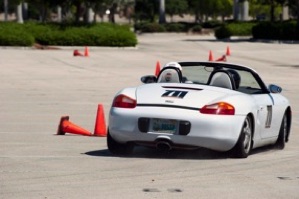
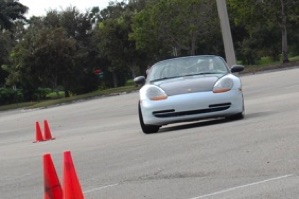
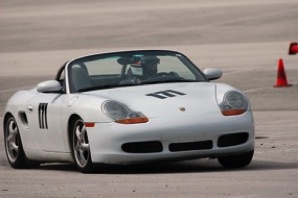
By knowing these basics when you do your first DE you won’t be overwhelmed with too much information from your instructor which will make your track day a lot more fun and safe.
Not sure if these cars can really take the hard driving?
I’ll just use my car as an example. It’s a 1998 2.5L Boxster.
I started doing DE events as soon as the car finished the break in-period by the Summer of ’98 in St. Louis where I was living at the time.
Since then, to date it now just reached 300,000 miles on the odometer and of those, close to 15,000 miles are on the track.
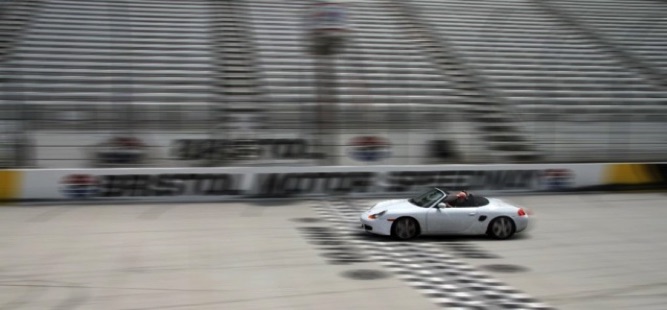
I’ve tracked it at Gateway International, Circuit of the Americas, Harris Hill Road, Road America, Bristol Motor Speedway, Homestead-Miami Speedway, Palm Beach International (Moroso), Daytona International Speedway, Roebling Road, Road Atlanta, Virginia International Raceway, and at my home track and favorite of all, Sebring International Speedway!
Hope to see you at the AX and the track soon!

